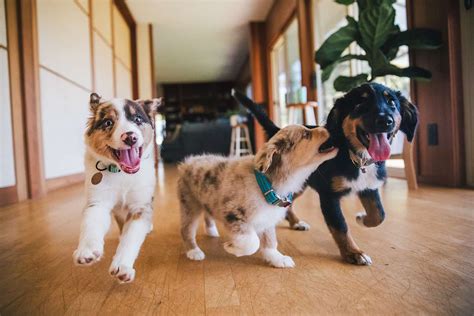Socialization is widely recognized as a crucial factor in the overall well-being and behavior of pets. However, anxiety can pose a significant challenge to this essential process. This article delves into the intricate relationship between pet socialization and anxiety, exploring the causes, consequences, and effective strategies for managing these co-occurring concerns.

Importance of Pet Socialization
Socialization is the process by which pets learn to interact appropriately with other animals, humans, and their environment. It fosters a sense of confidence, security, and adaptability, which reduces the likelihood of anxiety-related behaviors.
- Benefits of Pet Socialization:
- Reduced fear and aggression
- Improved communication and socialization skills
- Enhanced cognitive development
- Increased trainability and obedience
According to the American Veterinary Medical Association (AVMA), socialization is most effective when it begins early in a pet’s life. Puppies and kittens should be exposed to a variety of positive experiences to develop a healthy and well-adjusted personality.
Causes of Anxiety in Pets
Anxiety is a common problem among pets, affecting up to 40% of dogs and 20% of cats. It can manifest in various ways, including:
- Physical symptoms: Pacing, panting, trembling, excessive licking
- Behavioral symptoms: Hiding, avoidance, aggression, destructive behavior
Anxiety in pets can stem from several sources, including:
- Genetics: Some breeds are more prone to anxiety than others.
- Environmental factors: Changes in routine, loud noises, or unfamiliar people can trigger anxiety.
- Traumatic experiences: Previous negative experiences, such as neglect or abuse, can lead to long-term anxiety.
Socialization VS Anxiety
Socialization and anxiety often have a reciprocal relationship. Lack of socialization can contribute to anxiety, while anxiety can make socialization more difficult.
Impacts of Socialization on Anxiety
Positive socialization experiences can reduce anxiety by:
- Building a pet’s confidence and resilience
- Teaching coping mechanisms for stressful situations
- Promoting a sense of safety and predictability
Impacts of Anxiety on Socialization
Anxiety can hinder socialization by:
- Making pets fearful of approaching other animals or people
- Causing avoidance behaviors that prevent them from engaging in social situations
- Triggering aggressive responses in some pets
Effective Strategies for Managing Pet Anxiety
Managing pet anxiety involves addressing both its underlying causes and symptoms. Effective strategies include:
1. Gradual Socialization:
- Start by exposing your pet to new people and environments in controlled and positive settings.
- Gradually increase the intensity and duration of socialization experiences.
2. Behavioral Therapy:
- Consult with a certified animal behaviorist or veterinarian for professional guidance.
- They can recommend techniques such as desensitization and counter-conditioning.
3. Medication:
- In some cases, anti-anxiety medication may be prescribed to reduce symptoms.
- However, medication should only be used in conjunction with behavioral interventions.
Tips and Tricks
- Create a calming environment: Provide your pet with a safe and comfortable space where they feel secure.
- Use positive reinforcement: Reward your pet for calm and confident behavior.
- Avoid punishment: Never punish your pet for anxious behaviors. This will only worsen their anxiety.
- Manage stressors: Identify and minimize triggers that cause your pet anxiety.
Case Detail Comparison: Socialized vs. Anxious Pets
Socialized Pet:
- Approaches other animals and people with confidence
- Explores new environments without hesitation
- Maintains calm and relaxed demeanor
Anxious Pet:
- Avoids or withdraws from social interactions
- Exhibits excessive fear or aggression
- Displays anxious behaviors such as pacing, panting, or hiding
Conclusion
Pet socialization and anxiety are intricately linked, with each influencing the other. By understanding the importance of socialization and the causes of anxiety, pet owners can effectively address these co-occurring concerns. Gradual socialization, behavioral therapy, and positive reinforcement techniques can help pets overcome anxiety and thrive in social situations.
Useful Tables
| Socialization Stage | Age | Recommended Activities |
|---|---|---|
| Early Socialization | Birth to 12 weeks | Exposure to different people, animals, and environments |
| Intermediate Socialization | 12 weeks to 6 months | Continued exposure to new experiences, including obedience training |
| Advanced Socialization | 6 months to adulthood | Focus on socializing with specific groups, such as other dogs or children |
| Risk Factors for Anxiety in Pets | Prevalence |
|---|---|
| Breed | Varies by breed |
| Genetics | Heritable in some breeds |
| Early life experiences | Traumatic or negative experiences can increase risk |
| Environmental factors | Changes in routine, loud noises, unfamiliar people |
| Effective Strategies for Managing Pet Anxiety | Description |
|---|---|
| Gradual Socialization | Exposing pets to new experiences in a controlled and positive way |
| Behavioral Therapy | Techniques such as desensitization and counter-conditioning |
| Medication | Anti-anxiety medications can reduce symptoms, but should be used with behavioral interventions |
| Complementary Therapies | Acupuncture, pheromone therapy, or herbal remedies may provide additional support |
References
- American Veterinary Medical Association. (2021). Pet socialization. Retrieved from https://www.avma.org/resources-tools/pet-owners/petcare/pet-socialization
- Dunbar, I. (2017). Before and after getting your puppy. Penguin Random House.
- Mills, D. (2009). The pet behavior problems handbook. Blackwell Publishing.
- Overall, K. L., & Dunham, A. E. (2011). The impact of early socialization on long-term behavior in dogs. Applied Animal Behaviour Science, 133(1-2), 106-114.





















